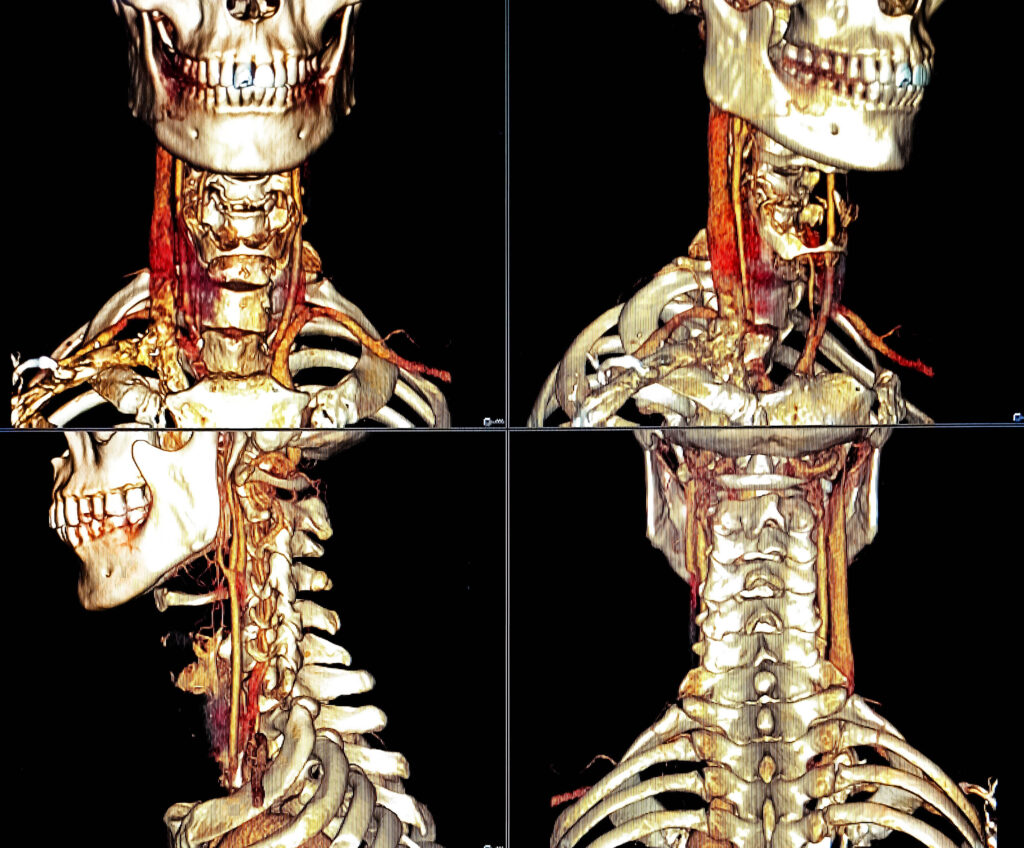
Suggestive of Neck Ct scan seen right side problem. 3D reconstruction of neck ct contrast media.
PROVIDENCE, RI – A startling increase in a lesser-known cause of strokes has been uncovered by a new nationwide study, revealing a 400% rise in hospital stays linked to cervical artery dissection since 2005.
Immediate Impact
The study, led by Dr. Shadi Yaghi, a vascular neurologist at Brown University, examined 125,102 records to shed light on this alarming trend. Cervical artery dissection occurs when the inner lining of a neck artery splits, allowing blood to force its way between the layers. This can create a flap that either slows blood flow or forms a clot, leading to an ischemic stroke.
Key Details Emerge
This condition is responsible for up to one in four strokes in adults under fifty, making it a significant threat during prime working years. Often following a car accident, sports injury, or heavy lifting, even seemingly minor actions like reaching awkwardly can trigger a tear.
New Detection Methods
Advancements in ultrasound and magnetic resonance imaging now detect tiny mural bruises previously missed by older technology, contributing to the rise in reported cases. However, this increase is not solely due to better detection but also reflects a genuine rise in incidence.
Hospital stays linked to cervical artery dissection rose 400% between 2005 and 2019.
By the Numbers
From 2005 to 2019, the incidence of cervical artery dissection climbed from 11 to 46 cases per million people, marking an average annual increase of 10%. Notably, Hispanic and Black Americans experienced the steepest increases, nearly doubling the rate seen in white patients. This suggests disparities in trauma exposure and access to early vascular care.
Expert Analysis
Dr. Yaghi emphasized the importance of early diagnosis, stating, “Strokes that are not fatal can lead to long-term disability, poor mental health, and reduced quality of life.” The sharpest rise was observed in individuals over sixty-five, suggesting that age-related vessel changes and more liberal imaging practices are revealing cases once attributed to arthritis pain.
Incidence climbed from 11 to 46 cases per million people over 15 years.
Recognizing Cervical Artery Strokes
Sports medicine literature links dissections to activities like wrestling, surfing, and yoga, which can force the neck beyond its normal range. A case involving a 34-year-old woman who suffered a fatal stroke after chiropractic neck manipulation underscores the need for caution.
Clues Something is Wrong
Emergency clinicians are trained to recognize sudden one-sided headaches or neck pain, sometimes coupled with a droopy eyelid, as classic indicators. A pulsing “whoosh” in one ear may also signal turbulent blood flow past a tear. In ambiguous cases, physicians look for Horner’s syndrome, characterized by a pinpoint pupil and partially closed eyelid.
What Comes Next
Guidelines recommend starting patients on antiplatelet drugs like aspirin for three to six months, reserving anticoagulants for more complex cases. Intravenous clot-busting medicine remains safe within the standard treatment window. Endovascular stenting is considered for recurrent cases, with high technical success rates reported.
Lowering Risk
- Always wear a seatbelt and adjust the headrest to eye level.
- Avoid twisting the neck while lifting heavy objects.
- Secure loose items in the car to prevent sudden reaches.
- Return to weightlifting with lighter loads after imaging confirms healing.
Researchers are exploring direct oral anticoagulants and ultrasound markers to identify weak arteries before they fail. Genetic studies are also underway to understand the role of connective-tissue biology in this condition.
The findings are published in the journal Neurology.
—
Like what you read? Subscribe to our newsletter for engaging articles, exclusive content, and the latest updates.
Check us out on EarthSnap, a free app brought to you by Eric Ralls and Earth.com.






